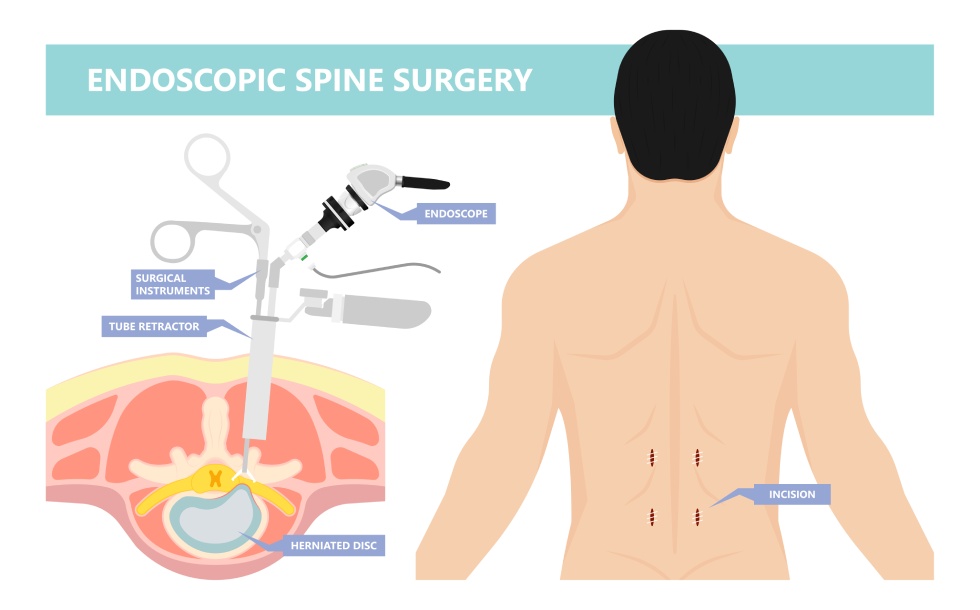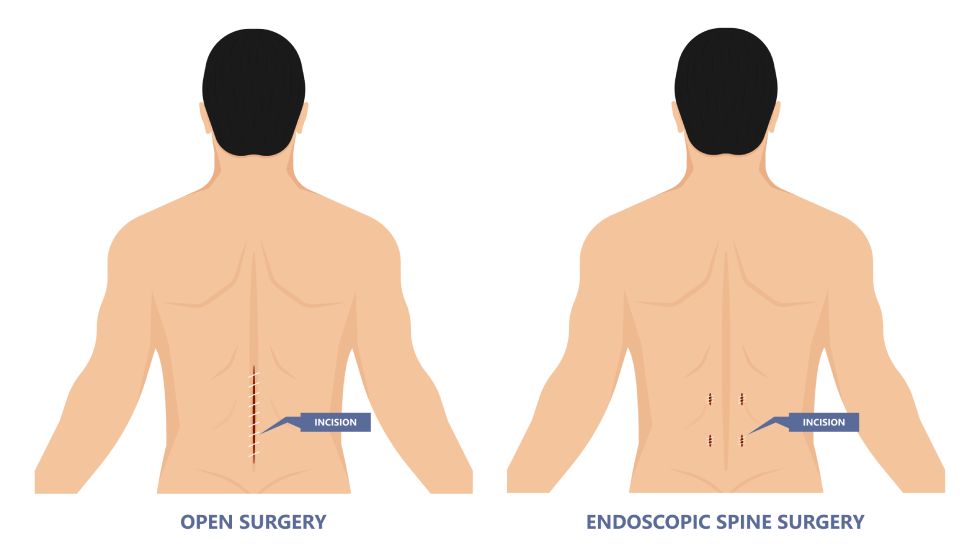Search the web for “types of spinal decompression surgery” and you’re likely to get results that mention procedures such as a laminectomy, laminotomy, laminoplasty, discectomy or microdiscectomy.
But these are not types of spinal decompression surgery themselves as much as they are techniques used during different types of surgery.
- Laminectomy, laminotomy, and laminoplasty all involve the lamina, the bony roof of the spinal canal.
- Discectomy & microdiscectomy focus on the intervertebral disc, the cushion between vertebrae.
What is decompression surgery of the spine, and what are the main types? Simply put, when it comes to overarching types of spinal decompression surgery. here are four of the safest and most effective methods:
- Open Spinal Decompression Surgery
- Tubular Spinal Decompression Surgery
- Minimally Invasive Spinal Decompression Surgery
- Endoscopic Spinal Decompression Surgery
Let’s discuss what is involved with each type of surgery as well as some of the main benefits of each type of surgery.
1. Open Spinal Decompression Surgery
When it comes to decompression of the spine, the “traditional” surgical method is open spinal decompression surgery. This type of decompression utilizes larger incisions for the highest degree of visibility. It can be used with any decompression technique (i.e. laminectomy, microdiscectomy, etc).
It allows for direct access to the spine and a high degree of decompression, making it an ideal type of decompression back surgery for severe cases.
It also involves a high degree of precision in relieving pressure off the spinal canal and ensuring the spinal nerves are no longer compressed. It has also been used the longest out of any type of spinal decompression surgery.
2. Tubular Spinal Decompression Surgery
Tubular spinal decompression surgery utilizes devices called tubular retractors to provide access to the spine without making incisions as large as open decompression.
The result is often less muscle disruption, smaller scars, and quicker recovery.
Tubular spinal decompression surgery also may reduce postoperative pain, minimize blood loss, and preserve more of the surrounding tissue.
The preferred method of decompression used with tubular spinal decompression surgery is microdiscectomy.
A laminectomy is almost always necessary when doing a tubular decompression or minimally invasive surgery. It is difficult to get to the spinal canal when doing these two surgeries without conducting a laminectomy, because you can’t see.
3. Minimally Invasive Spinal Decompression Surgery
Minimally invasive spinal decompression surgery is designed, as its name implies, to be less invasive than open spinal decompression surgery.
Like tubular spinal decompression surgery, it is associated with faster recovery times and less postoperative pain.
This type of decompression back surgery also usually results in a lower risk of infection and a quick return to normal activities.
The preferred method of decompression used with minimally invasive spinal surgery is microdiscectomy.

4. Endoscopic Spinal Decompression Surgery
Endoscopic spinal decompression surgery is the only true minimally invasive spine surgery, therefore it carries with it many of the same benefits. The difference is that endoscopic spinal decompression surgery is often possible with even smaller incisions, plus the use of an endoscope to visualize and target areas to be treated without having to disrupt the muscle or having to perform a laminectomy.
Due to the tiny incisions and use of an endoscope, this type of spinal decompression surgery is ideal for highly-targeted decompression.
It may involve a recovery time that’s on par with or even shorter than minimally invasive spinal decompression surgery. It can be done under local anesthesia only, requiring a lot less risk.
The preferred method of decompression used with endoscopic spinal decompression surgery is microdiscectomy.
Why Spinal Decompression Surgery and Spinal Fusion Surgery Go Hand in Hand
Spinal decompression surgery is an extremely effective way to relieve nerve compression that is often caused by bulging discs, bone spurs, and spinal stenosis. But it can destabilize the spine due to the amount of bone removal necessary for visualization.
This is why at Desert Spine and Scoliosis Center, we always perform spinal decompression surgery and spinal fusion surgery together. The former provides relief from the symptoms the patient experiences. The latter provides stability and ensures a positive overall surgical outcome.
How Serious is Spinal Decompression Surgery?
The answer to this question isn’t necessarily cut and dry, but that’s not because this type of procedure is especially dangerous. On the contrary.
That having been said, “spinal decompression surgery”, as you now know, is an umbrella term for various types of surgery, each of which carries its own level of risk.
Here’s the takeaway: Even the riskiest forms of decompression surgery are a lot less risky than other types of surgery, and all forms are generally safe.
How Do I Know Which Spine Decompression Surgery I Need?
You don’t have to! At least not when you choose Desert Spine and Scoliosis Center and ask the right questions.
A good spine surgeon like Dr. Baig will conduct a comprehensive assessment of your spine, evaluate your symptoms, do a thorough review of your imaging and provide you with the right options, whether they be surgical or more on the conservative non surgical approach to ensure the right options are presented for your unique circumstances.
That being said, we also are happy to provide educational resources online to help you come to informed medical decisions, like our blog post “Is Minimally Invasive Spine Surgery Right for You?”.
Learn More About How to Beat Back & Nerve Pain
Ready to figure out what your surgical options for dealing with nerve pain or back pain are? Contact us at Desert Spine and Scoliosis Center today!
Our team of highly qualified and experienced back and spine specialists are here to help you improve your quality of life with solutions that are individualized to your specific needs.



Recent Comments